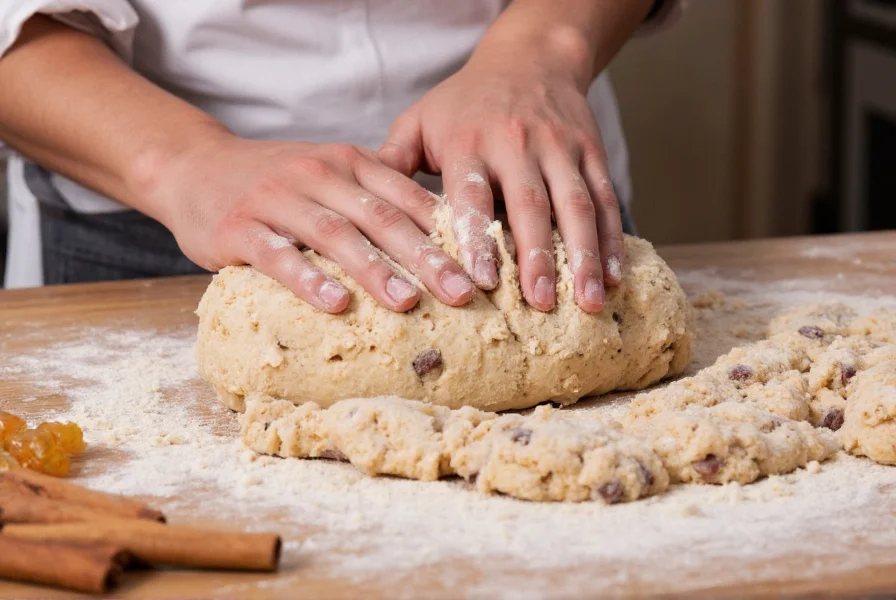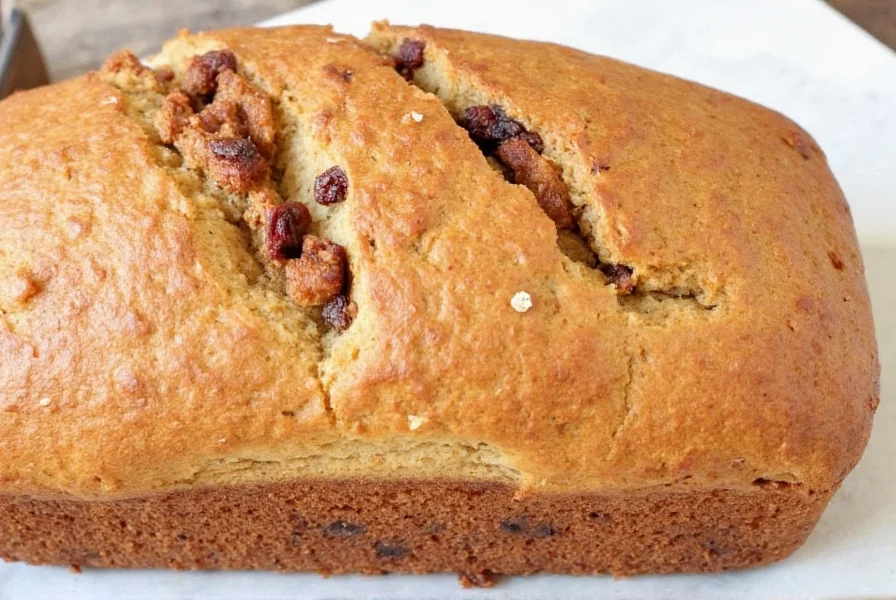The perfect homemade cinnamon raisin bread combines soft, tender crumb with plump raisins and warm cinnamon swirls. This yeast-based sweet bread requires basic baking ingredients, proper kneading technique, and attention to proofing times for optimal texture. Unlike store-bought versions, homemade cinnamon raisin bread allows complete control over ingredient quality, sweetness level, and spice intensity, resulting in a fresher, more flavorful loaf that fills your kitchen with irresistible aroma.
Creating exceptional homemade cinnamon raisin bread starts with understanding the science behind each ingredient's role. This beloved sweet bread variation transforms simple pantry staples into a comforting treat perfect for breakfast or afternoon snacks. When made properly, the bread should have a golden crust, moist interior, and evenly distributed cinnamon-raisin swirls that don't sink to the bottom during baking.
Essential Ingredients and Their Purpose
Understanding why each component matters ensures consistent results with your homemade cinnamon raisin bread recipe. Professional bakers emphasize ingredient quality as the foundation of exceptional results.
| Ingredient | Function | Professional Tip |
|---|---|---|
| All-purpose flour | Provides structure through gluten development | Measure by weight (450g) for accuracy instead of cups |
| Active dry yeast | Leavening agent for rise and texture | Bloom in warm liquid (105-110°F) before use |
| Golden raisins | Traditional fruit component with milder flavor | Soak in warm water 10 minutes to prevent burning |
| Ceylon cinnamon | Superior flavor with less bitterness than cassia | Use 2-3 times more than recipe suggests for intensity |
| Egg | Enriches dough and improves browning | Bring to room temperature before incorporating |
Step-by-Step Preparation Process
Mastering the technique for homemade cinnamon raisin bread requires attention to detail at each stage. The following method produces consistently excellent results:
Dough Preparation
Dissolve 2¼ teaspoons active dry yeast and 1 tablespoon sugar in ½ cup warm milk (105-110°F). Let sit 5-10 minutes until foamy. In a separate bowl, combine 3½ cups (450g) all-purpose flour, ¼ cup sugar, 1 teaspoon salt, and 1 large egg. Pour yeast mixture and ¼ cup melted butter into dry ingredients. Mix until a shaggy dough forms.
Kneading Technique
Transfer dough to floured surface and knead 8-10 minutes until smooth and elastic. Alternatively, use dough hook on medium speed for 6-8 minutes. Properly developed dough passes the "windowpane test"—stretch a small piece thin enough to see light through without tearing.

First Proofing
Place dough in lightly oiled bowl, cover with damp cloth, and let rise in warm spot until doubled (60-90 minutes). Ideal proofing environment maintains 75-80°F temperature. Dough is ready when indentation remains after gentle poke with finger.
Swirl Assembly
Roll risen dough into 16x12 inch rectangle. Brush with 2 tablespoons softened butter, then sprinkle with ⅓ cup sugar and 2 tablespoons Ceylon cinnamon mixed together. Evenly distribute 1 cup plump golden raisins across surface. Roll tightly from long side, pinching seam to seal. Place seam-side down in greased 9x5 inch loaf pan.
Common Pitfalls and Professional Solutions
Even experienced bakers encounter challenges with homemade cinnamon raisin bread. Understanding these issues prevents disappointing results:
- Sunken raisins: Always toss raisins in 1-2 tablespoons flour before adding to prevent sinking during baking
- Dense texture: Over-kneading or excessive flour causes toughness—measure flour by weight for accuracy
- Weak cinnamon flavor: Use premium Ceylon cinnamon and consider adding ½ teaspoon cinnamon extract to dough
- Collapsed center: Under-proofed dough rises too rapidly in oven—ensure proper first rise before shaping
- Burnt raisins: Soak raisins in warm water for 10 minutes before incorporating to prevent scorching
Variations for Unique Homemade Cinnamon Raisin Bread
Once you've mastered the basic technique, experiment with these professional variations:
- Orange-infused: Add 2 tablespoons orange zest to dough and substitute orange juice for milk
- Nutty version: Incorporate ½ cup toasted pecans or walnuts with the raisins
- Whole grain option: Replace 1 cup all-purpose flour with whole wheat flour for added nutrition
- Glaze finish: Brush baked loaf with simple syrup (½ cup sugar + ¼ cup water, boiled 2 minutes)
- Spiced upgrade: Add ¼ teaspoon each of nutmeg and cardamom to cinnamon mixture

Storage and Serving Recommendations
Proper storage maintains freshness of your homemade cinnamon raisin bread. Cool completely on wire rack before storing to prevent condensation. Keep in airtight container at room temperature for 3-4 days. For longer preservation, wrap tightly in plastic wrap then foil before freezing (up to 3 months).
Serve slices toasted with additional butter for enhanced flavor. This bread pairs exceptionally well with strong coffee or chai tea. For special occasions, prepare as pull-apart rolls by cutting dough into 1½ inch pieces before second rise.
Troubleshooting Guide
Address these common issues with targeted solutions:
- Dough won't rise: Check yeast expiration date and liquid temperature—water hotter than 120°F kills yeast
- Bread collapses after baking: Undercooked interior—test with thermometer (190°F internal temperature indicates doneness)
- Excessive shrinkage: Over-proofed dough—reduce second rise time by 15-20 minutes
- Hard crust: Insufficient steam in oven—place water-filled pan on bottom rack during baking
- Uneven swirls: Roll dough more tightly and ensure even filling distribution before rolling
Perfecting Your Homemade Cinnamon Raisin Bread
Mastering this classic sweet bread requires attention to ingredient quality, precise measurements, and proper technique. The most successful bakers treat each step with care—from yeast activation to final cooling. Remember that environmental factors like kitchen temperature and humidity affect dough behavior, so be prepared to adjust liquid amounts slightly as needed.
When executed properly, homemade cinnamon raisin bread delivers a sensory experience far surpassing commercial versions. The aroma filling your kitchen during baking, the visual appeal of perfectly distributed swirls, and the satisfying texture combining tender crumb with chewy raisins creates a truly special treat worth the effort. With practice, you'll develop intuition for dough consistency and proofing times, allowing you to consistently produce bakery-quality results at home.











 浙公网安备
33010002000092号
浙公网安备
33010002000092号 浙B2-20120091-4
浙B2-20120091-4